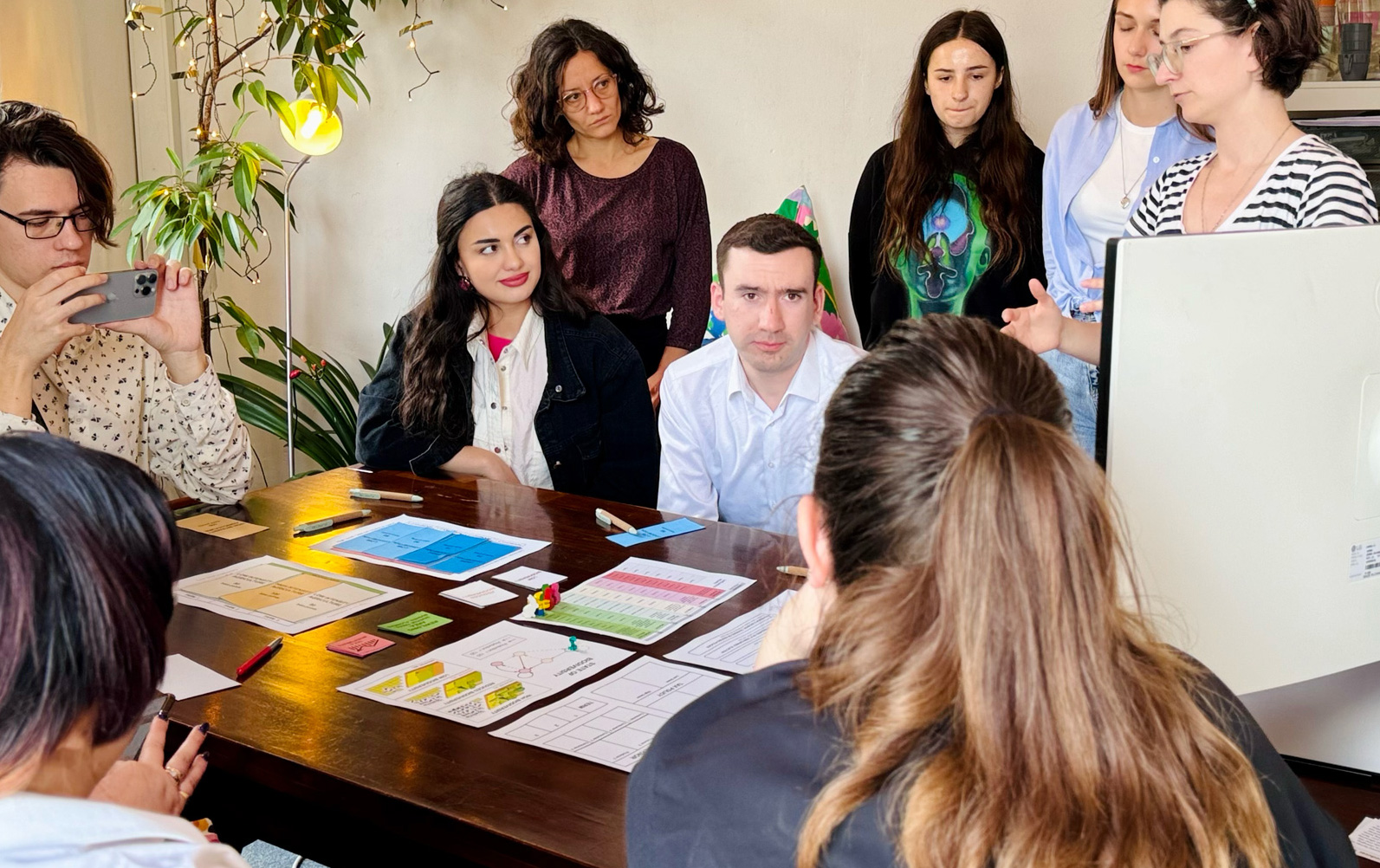
PATHBREAK: A Biodiversity–Food–Governance Game
Purpose
To explore the complex relationships between biodiversity, food systems, and governance through collaborative role-play. PATHBREAK invites participants to step into diverse roles – farmers, policymakers, citizens – and navigate real-world dilemmas, trade-offs and decision-making processes. The game fosters critical thinking, empathy and systems awareness.
Key Features
Participants:
- Minimum: 7 players
- Maximum: 14 players (2 facilitators recommended for larger groups)
- Suitable for age 13+, including adults at university level and beyond, as well as mixed groups in participatory stakeholder workshops
Estimated Timeframe:
- Preparation: 2–3 hours (first-time facilitators)
- Setup: 30 minutes
- Gameplay: ~90 minutes
- Debrief: 30–60 minutes
- Total session: ~2.5–3 hours
Budget Level:
- Low
- Game is open access and free to download
- Costs may include printing, venue hire, refreshments and optional documentation
Materials Needed:
- Printed gameboard and role cards; Tokens for indicators
- Laptop with internet access; Projector or screen (recommended)
- Facilitator manual
- Spreadsheet for tracking decisions (included in the Web App)
- Post-game survey (included in the Web App)
- Institutionally approved ethical information and consent forms (if collecting data, also included in the Web App)
- Optional: camera or recorder (with consent)
Skills Required:
- Group facilitation and inclusive communication
- Conflict management and intercultural sensitivity
- Ability to explain rules and guide gameplay
- Framing reflection and linking to real-world relevance
- Adaptability and ethical awareness
- Optional: experience in teaching or stakeholder engagement
Case Study
Method in Practice
Context of Use
Piloted by PLANET4B international consortium members, students at the Martin Luther University Halle-Wittenberg, and the Urban Youth Learning Community in Germany, as well as with groups not part of the project. Participants explored biodiversity decision-making through role-play, experiencing systemic complexity and social dilemmas.
How It Worked
Players assumed roles with varied social positions and interests. Through structured rounds, they made decisions, voted and negotiated. Facilitators guided gameplay and supported reflection, helping participants connect the experience to broader governance and biodiversity issues.
Engagement & Participation
The method encouraged active participation, empathy, and critical dialogue. Facilitators supported inclusive engagement and adapted pacing to group dynamics.
Outcomes & Insights:
- Deepened understanding of biodiversity governance
- Surfaced tensions and trade-offs in decision-making
- Built empathy across roles and perspectives
- Strengthened group dialogue and collaboration
- Inspired real-world reflection and action
Strengths & Considerations
Strengths:
- Immersive and thought-provoking
- Supports systems thinking and social learning
- Adaptable across sectors and settings
- Encourages reflection and real-world relevance
- Open access and low-cost
Considerations:
- Requires skilled facilitation and preparation
- Emotional or complex themes may arise
- Impact depends on quality of debrief and framing
- Best used in a quiet, uninterrupted space
- The game does not result in a clear ‘winner’
- Follow-up reflection enhances learning



